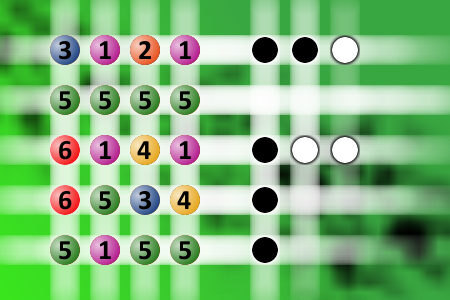What a winning combination?
The computer chose a secret code (sequence of 4 digits from 1 to 6). Your goal is to find that code. Black circles indicate the number of hits on the right spot. White circles indicate the number of hits on the wrong spot.Correct answers: 2
#brainteasers #mastermind

A dentist ran out of anaesthet...
A dentist ran out of anaesthetic just before the last extraction for the day was scheduled.
He gave the nurse a very large needle, instructing her to jab it hard into the patient's butt when the signal was given, so it would take his attention away from the tooth extraction.
It all happened in an instant.
The nurse, patient, and pliers were in place. The signal was given, and the nurse bayoneted the patient with the needle just as the dentist yanked the tooth.
Afterwards, the dentist asked, "Hurt much?"
The patient hesitated, "Didn't hardly feel it come out. And, man, those roots were really deep!"
He gave the nurse a very large needle, instructing her to jab it hard into the patient's butt when the signal was given, so it would take his attention away from the tooth extraction.
It all happened in an instant.
The nurse, patient, and pliers were in place. The signal was given, and the nurse bayoneted the patient with the needle just as the dentist yanked the tooth.
Afterwards, the dentist asked, "Hurt much?"
The patient hesitated, "Didn't hardly feel it come out. And, man, those roots were really deep!"

